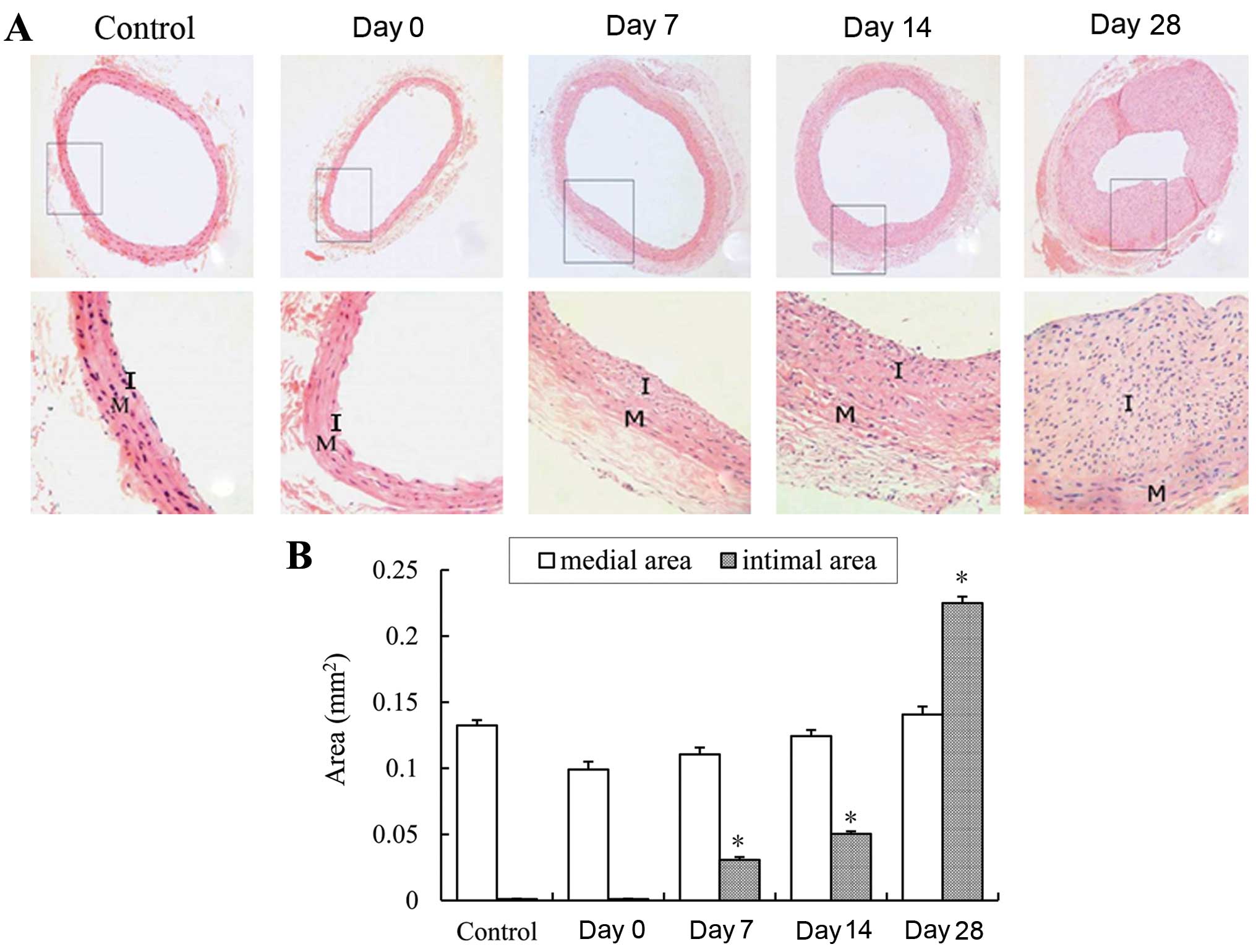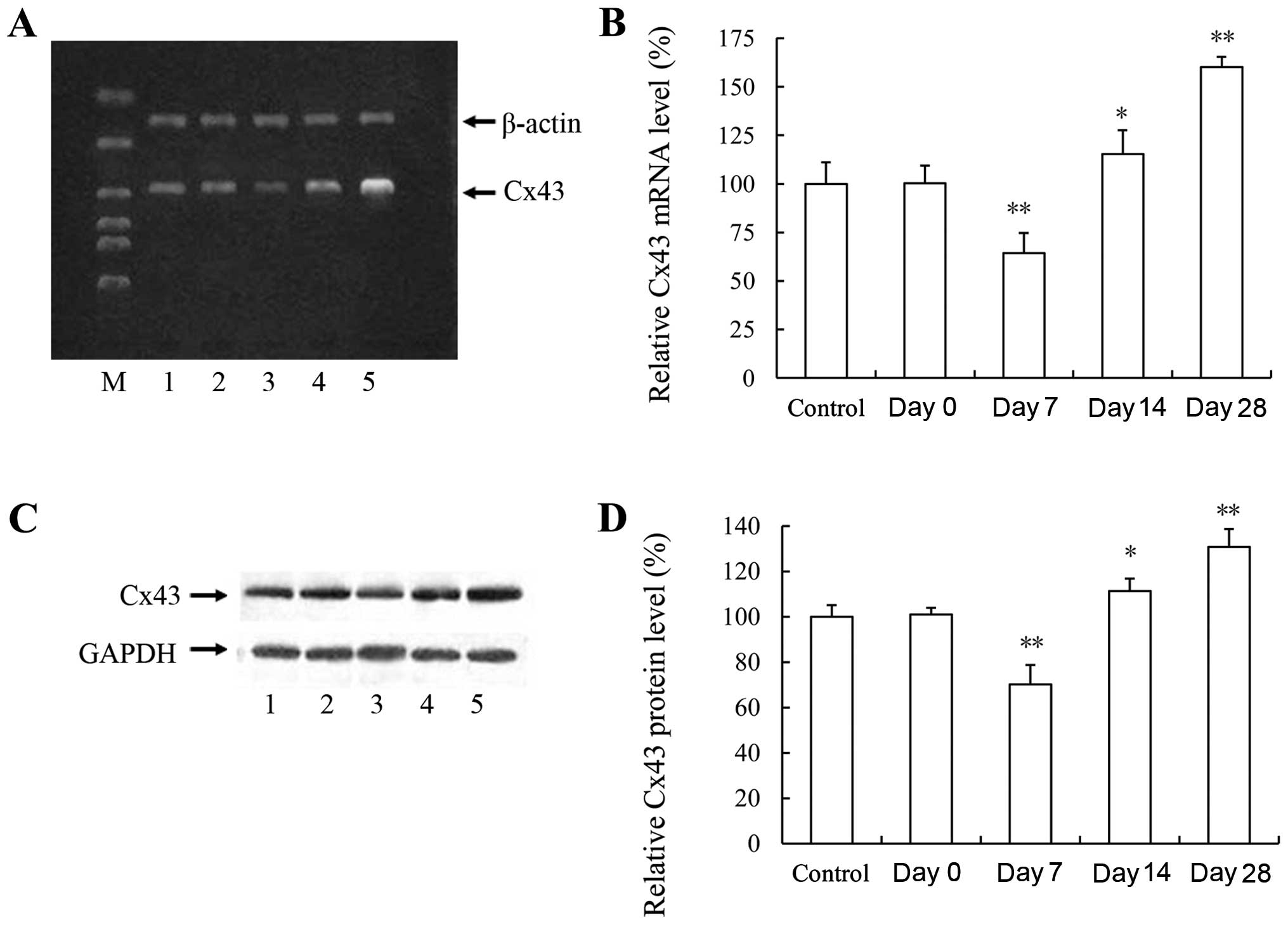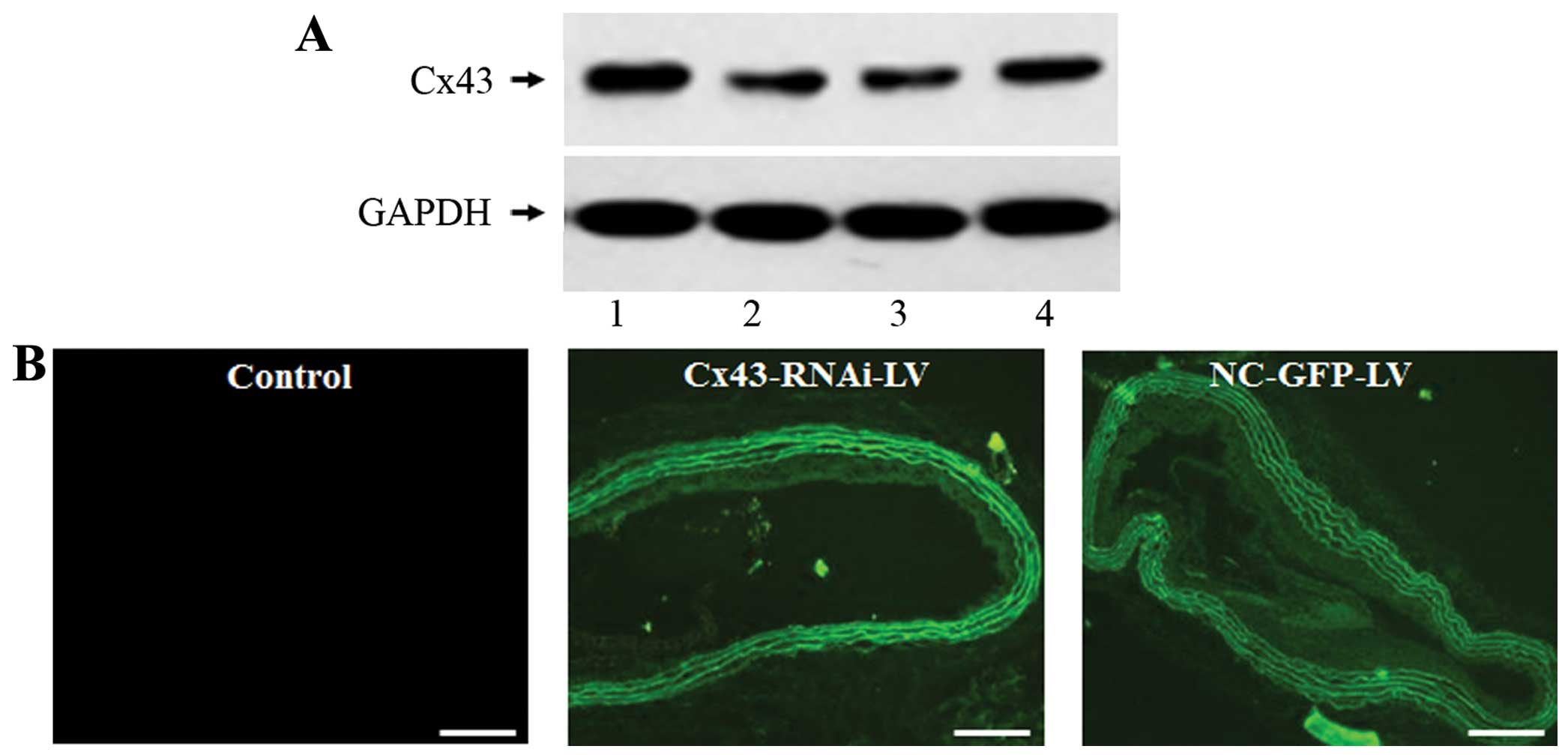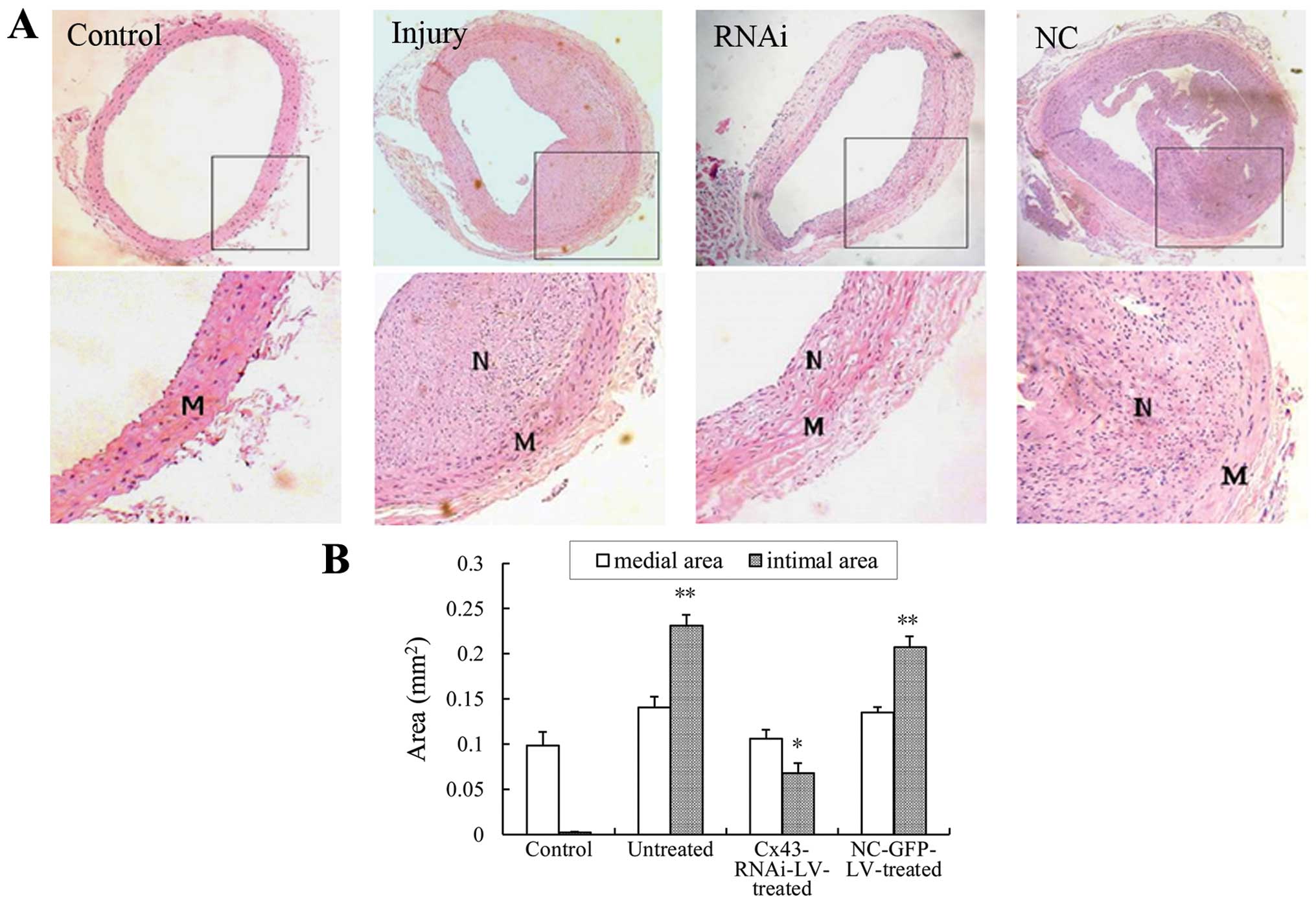|
1
|
Trikalinos TA, Alsheikh-Ali AA, Tatsioni
A, Nallamothu BK and Kent DM: Percutaneous coronary interventions
for non-acute coronary artery disease: a quantitative 20-year
synopsis and a network meta-analysis. Lancet. 373:911–918. 2009.
View Article : Google Scholar : PubMed/NCBI
|
|
2
|
Meads C, Cummins C, Jolly K, Stevens A,
Burls A and Hyde C: Coronary artery stents in the treatment of
ischaemic heart disease: a rapid and systematic review. Health
Technol Assess. 4:1–153. 2000.PubMed/NCBI
|
|
3
|
Odell A, Grip L and Hallberg LR:
Restenosis after percutaneous coronary intervention (PCI):
experiences from the patients’ perspective. Eur J Cardiovasc Nurs.
5:150–157. 2006. View Article : Google Scholar
|
|
4
|
Zhang C, Chaturvedi D, Jaggar L, Magnuson
D, Lee JM and Patel TB: Regulation of vascular smooth muscle cell
proliferation and migration by human sprouty 2. Arterioscler Thromb
Vasc Biol. 25:533–538. 2005. View Article : Google Scholar : PubMed/NCBI
|
|
5
|
Owens GK: Regulation of differentiation of
vascular smooth muscle cells. Physiol Rev. 75:487–517.
1995.PubMed/NCBI
|
|
6
|
Crowley ST, Ray CJ, Nawaz D, Majack RA and
Horwitz LD: Multiple growth factors are released from mechanically
injured vascular smooth muscle cells. Am J Physiol.
269:H1641–H1647. 1995.PubMed/NCBI
|
|
7
|
Li F, Zhang C, Schaefer S, Estes A and
Malik KU: ANG II-induced neointimal growth is mediated via cPLA2-
and PLD2-activated Akt in balloon-injured rat carotid artery. Am J
Physiol Heart Circ Physiol. 289:H2592–H2601. 2005. View Article : Google Scholar : PubMed/NCBI
|
|
8
|
Jia G, Cheng G, Gangahar DM and Agrawal
DK: Involvement of connexin 43 in angiotensin II-induced migration
and proliferation of saphenous vein smooth muscle cells via the
MAPK-AP-1 signaling pathway. J Mol Cell Cardiol. 44:882–890. 2008.
View Article : Google Scholar : PubMed/NCBI
|
|
9
|
Hervé JC, Phelan P, Bruzzone R and White
TW: Connexins, innexins and pannexins: bridging the communication
gap. Biochim Biophys Acta. 1719:3–5. 2005. View Article : Google Scholar : PubMed/NCBI
|
|
10
|
Bruzzone R, White TW and Paul DL:
Connections with connexins: the molecular basis of direct
intercellular signaling. Eur J Biochem. 238:1–27. 1996. View Article : Google Scholar : PubMed/NCBI
|
|
11
|
Elfgang C, Eckert R, Lichtenberg-Fraté H,
et al: Specific permeability and selective formation of gap
junction channels in connexin -transfected HeLa cells. J Cell Biol.
129:805–817. 1995. View Article : Google Scholar : PubMed/NCBI
|
|
12
|
van Kempen MJ and Jongsma HJ: Distribution
of connexin37, connexin40 and connexin43 in the aorta and coronary
artery of several mammals. Histochem Cell Biol. 112:479–486. 1999.
View Article : Google Scholar
|
|
13
|
Hong T and Hill CE: Ristricted expression
of the gap junctional protein connexin43 in the arterial system of
the rat. J Anat. 192:583–593. 1998. View Article : Google Scholar
|
|
14
|
Li X and Simard JM: Increase in Cx45 gap
junction channels in cerebral smooth muscle cells from SHR.
Hypertension. 40:940–946. 2002. View Article : Google Scholar : PubMed/NCBI
|
|
15
|
Matsushita T, Rama A, Charolidi N, Dupont
E and Severs NJ: Relationship of connexin43 expression to
phenotypic modulation in cultured human aortic smooth muscle cells.
Eur J Cell Biol. 86:617–628. 2007. View Article : Google Scholar : PubMed/NCBI
|
|
16
|
Ram R, Wescott AP, Varandas K, Dirksen RT
and Blaxall BC: Mena associates with Rac1 and modulates connexin 43
remodeling in cardiomyocytes. Am J Physiol Heart Circ Physiol.
306:H154–H159. 2014. View Article : Google Scholar :
|
|
17
|
Kieken F, Mutsaers N, Dolmatova E, et al:
Structural and molecular mechanisms of gap junction remodeling in
epicardial border zone myocytes following myocardial infarction.
Circ Res. 104:1103–1112. 2009. View Article : Google Scholar : PubMed/NCBI
|
|
18
|
Qu J, Volpicelli FM, Garcia LI, et al: Gap
junction remodeling and spironolactone-dependent reverse remodeling
in the hypertrophied heart. Circ Res. 104:365–371. 2009. View Article : Google Scholar :
|
|
19
|
Rucker-Martin C, Milliez P, Tan S, et al:
Chronic hemodynamic overload of the atria is an important factor
for gap junction remodeling in human and rat hearts. Cardiovasc
Res. 72:69–79. 2006. View Article : Google Scholar : PubMed/NCBI
|
|
20
|
Sovari AA, Rutledge CA, Jeong EM, et al:
Mitochondria oxidative stress, connexin43 remodeling, and sudden
arrhythmic death. Circ Arrhythm Electrophysiol. 6:623–631. 2013.
View Article : Google Scholar : PubMed/NCBI
|
|
21
|
Meng QH, Yang G, Yang W, Jiang B, Wu L and
Wang R: Protective effect of hydrogen sulfide on balloon
injury-induced neointima hyperplasia in rat carotid arteries. Am J
Pathol. 170:1406–1414. 2007. View Article : Google Scholar : PubMed/NCBI
|
|
22
|
Ai Z, Yin L, Zhou X, et al: Inhibition of
survivin reduces cell proliferation and induces apoptosis in human
endometrial cancer. Cancer. 107:746–756. 2006. View Article : Google Scholar : PubMed/NCBI
|
|
23
|
Barac YD, Zeevi-Levin N, Yaniv G, et al:
The 1,4,5-inositol trisphosphate pathway is a key component in
Fas-mediated hypertrophy in neonatal rat ventricular myocytes.
Cardiovasc Res. 68:75–86. 2005. View Article : Google Scholar : PubMed/NCBI
|
|
24
|
Chadjichristos CE, Morel S, Derouette JP,
et al: Targeting connexin 43 prevents platelet-derived growth
factor-BB-induced phenotypic change in porcine coronary artery
smooth muscle cells. Circ Res. 102:653–660. 2008. View Article : Google Scholar : PubMed/NCBI
|
|
25
|
Severs NJ, Rothery S, Dupont E, et al:
Immunocytochemical analysis of connexin expression in the healthy
and diseased cardiovascular system. Microsc Res Tech. 52:301–322.
2001. View Article : Google Scholar : PubMed/NCBI
|
|
26
|
Brisset AC, Isakson BE and Kwak BR:
Connexins in vascular physiology and pathology. Antioxid Redox
Signal. 11:267–282. 2009. View Article : Google Scholar
|
|
27
|
Chadjichristos CE, Matter CM, Roth I, et
al: Reduced connexin43 expression limits neointima formation after
balloon distension injury in hypercholesterolemic mice.
Circulation. 113:2835–2843. 2006. View Article : Google Scholar : PubMed/NCBI
|
|
28
|
Wang L, Chen J, Sun Y, et al: Regulation
of connexin expression after balloon injury: possible mechanisms
for antiproliferative effect of statins. Am J Hypertens.
18:1146–1153. 2005. View Article : Google Scholar : PubMed/NCBI
|
|
29
|
Wang LH, Chen JZ, Sun YL, et al: Statins
reduce connexin40 and connexin43 expression in atherosclerotic
aorta of rabbits. Int J Cardiol. 100:467–475. 2005. View Article : Google Scholar : PubMed/NCBI
|














